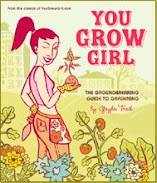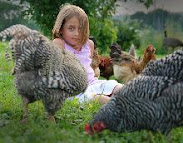Ok. Composting. This is not a hard thing but it can be complicated by factors like composters and hot composting, cold composting, what is ok to put in and what isn't.
For starters, the difference between hot composting and cold.
Hot composting. This is where you actually pay attention to your compost. You work it, you turn it, therefore inserting life giving oxygen to the microorganisms that break down the waste into rich soil matter for your beds. These organisms are things like bacteria, fungi, worms, various insects and some other critters. These critters need oxygen, nitrogen, carbon and moisture to do their work. In order for them to get these key elements, you have to do a little work and give it to them by including in your hot mix clover, fresh grass clippings, manure, dried leaves and twigs, and of course, if there isn't enough, there are fertilizers one can make to add the much needed nitrogen and carbon. Oxygen is given when the compost is turned. Decomposition time is decreased because the organisms work for you after you work for them.
Generally, this is for limited space and a lot of waste (you know for all of gazillion square feet that need to be composted at various points during the year). An easy way to get a lot is to make friends with your block. Most neighbors wouldn't mind getting rid of the bags and bags and bags of leaves and grass clippings and well yard waste. Especially when you take it off their hands or pitch in and help to make their lives easier.
Hot composting is called hot because all that work puts off heat. It's cool because you can stand next to it and get warm with temps hitting 110 to 160 degrees. Unfortunately, these temps kill the bad guys and the good guys. This compost may not be able to fight off disease.
Cold composting. It's the same thing but you are pretty much far more patient than the guy above and you have more time to wait, like a couple of years to get what the guy above will get in less than a season. The idea with cold is you pile it up on the ground or in a bin then you walk away. That's right, walk away. This is good for folks with not enough time to tend to the compost every other day or so, with little waste, and really in no big hurry. Of course you need to be more careful of what you put in this pile because the temp isn't going to be high enough to kill weed seeds and diseases. So some care must be placed here so that you don't disease your beds. If it is sick and you ripped it out of your garden, you don't want to put it in your cold compost area. The options of what to put in are more limited here.
Where do you put it? There are a few methods. Buy a nice length of good wire. It will naturally roll into itself making a contaner that can be zip tied so that it doesn't spread when you drop in your composting material. There are compost bins. There are lots of options here and it will be another post. The key thing here is that its level, where it can gain moisture and with luck, retain it. Close to the garden is a good idea, work smarter, not harder.
More later!
Seeing Gardens Differently
13 hours ago












0 comments:
Post a Comment